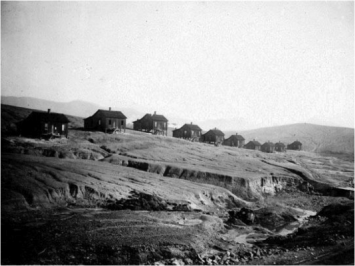OPINION
Carol Harden elegantly lays out, in broadest terms, from an environmental, cultural, social, political, economic and historical perspective, the essential confluence between geography as a discipline and sustainability as a concept. And then, in the face of the inevitability of change, she provides such a succinct metaphor for pursuing sustainability—just dance!
 [1]Like the American icon of apple pie, sustainability is easy to champion. To not embrace sustainability, to ignore the future, or, even worse, to intentionally support unsustainable practices connotes unenlightenment, greed, poor management, and bad manners. How could a thinking person or caring society choose to intentionally reduce the resources and opportunities available for future generations? The choice between sustainability and unsustainable practices appears as clear as that between good and evil. Right?
[1]Like the American icon of apple pie, sustainability is easy to champion. To not embrace sustainability, to ignore the future, or, even worse, to intentionally support unsustainable practices connotes unenlightenment, greed, poor management, and bad manners. How could a thinking person or caring society choose to intentionally reduce the resources and opportunities available for future generations? The choice between sustainability and unsustainable practices appears as clear as that between good and evil. Right?
The concept of sustainability typically refers to the conservative use of natural resources and minimal interference with environmental services, but it also applies to cultures, languages, institutions, communities, and ways of life. Compared to its primary predecessor, conservation, sustainability conjures up a broader view of the interacting sets of factors and processes that affect our landscapes and resources. To promote sustainability implies making efforts to prolong the status quo, to hold onto what we already have for as long as we can.
Conservation is still a valuable term, but it may have been associated with land management practices at specific places for too long to generate excitement in today’s predominantly urban, media-influenced populations. Another public relations problem with conservation is that it too often demands exclusion (don’t plow, don’t build, don’t cut the trees), not to mention that the notion of using less has not played well in a more-is better culture. Nonetheless, we are becoming familiar with the conservation of energy and water as practiced by walking, turning lights off, adjusting thermostats, fixing leaky faucets, and installing lower-flow showers and toilets. Motivated by economic stress (as at our financially strapped institutions of higher education), by idealism, or by the necessity imposed by diminishing supplies, we appear to be slowly creeping toward greater awareness of our relationships with these resources.
The term “sustainability” has become deeply embedded in national and international institutions. As we collectively undertake programs to sustain the status quo, we should wonder how stable it is. In geomorphology, I encounter the tension between the dynamic nature of natural systems and the human assumption of, and deep desire for, an unchanging landscape—a stable stage on which we can act out our comedies and tragedies. People are dismayed when a river changes course, a shoreline erodes, a forest burns, or a floodplain floods. but, except for over very short time periods, the land surface is not a stationary stage; it’s a dynamic surface, changing more rapidly and more predictably in some places than in others. Now, we are recognizing that other aspects of our environment that we previously considered stationary (that is, fluctuating within the same envelope of values), including mean sea level, Arctic ice cover, groundwater levels, frost-free days, and dominant tree species, are changing, too.
The new slogan, “stationarity is dead” (see Milly et al., 2008, Science 318:573-4), conveys the seriousness of global environmental change to planners, natural hazards researchers, engineers, and geographers, and other scientists and practitioners, who now face new levels of uncertainty and major challenges of developing new ways of interpreting and predicting environmental conditions. Previously, we relied on historical data to estimate future water supplies, and to predict the frequency and intensity of storms, droughts, and floods; but now, the present has become different from the past and the future promises to be even more different. How should we respond when the ground is shifting under our feet? What does “sustainability” mean when applied to dynamic systems?
Here’s where the dancing begins. Think of dancing in the sense of descending a talus slope, walking across a ship’s deck in rough seas, skiing through bumpy terrain, or maybe navigating a crowded dance floor with a polka partner. Such movements require adaptability to changing conditions. The dancer continues to move forward along an intended path, but the steps require some give-and-take. What does it take to be a good dancer? A light foot and good ability to predict the next obstacle or shift are key parts of the equation.
The dancing analogy fits well with the ‘footprint” metaphors we use. We have carbon footprints, water footprints, energy footprints, food carbon footprints, environmental footprints, urban footprints, megacity footprints, security footprints, and military force footprints, among others. Some of the footprints refer to locations with actual geographies, while others are abstract. Reducing one’s footprint means reducing one’s impact, sometimes reducing the actual land area affected. To be human is to have a footprint; to be almost 7 billion humans is to not be able to ignore the footprint. To be sustainable, we humans need to shrink our footprints and increase our capacity to adapt to change. Sustainability and its extended family of concepts and practices (e.g., sustainable development, sustainable cities, sustainable agriculture, sustainable energy) fit directly into the domains of geographers. We might argue the limitations of the concept of sustainability, but, better, would be to embrace the widespread attention given to this theme, so central to geography, and seize opportunities to apply geographical expertise to real issues facing the future of resources, valued customs, and institutions. Put on your little-footprint dancing shoes and dance. Better yet, choreograph.
Reprinted with permission from AAG Newsletter (Volume 44, Number 9, October 2009), President’s Column (http [2]:// [2]communicate [2]. [2]aag [2]. [2]org [2]/ [2]eseries [2]/ [2]nl [2]/2009_ [2]Oct [2]. [2]pdf [2])